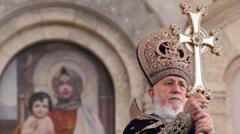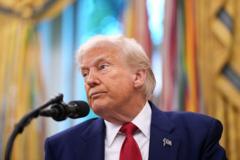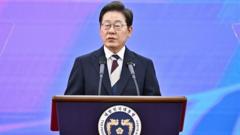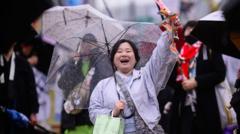As the papal conclave commences, the methods and objects employed in electing the next pope are unveiled.
Papal Conclave Underway: The Tradition Behind Selecting a New Pope

Papal Conclave Underway: The Tradition Behind Selecting a New Pope
The cardinals convene in the Vatican for a historic selection process steeped in tradition and secrecy.
The conclave to elect the next pope is currently taking place at the Vatican, as cardinals cast their secret ballots to choose a successor to Pope Francis. This significant event requires the cardinals to reach a two-thirds majority for a candidate to be elected. The discussions within the conclave remain a mystery, as it is a private gathering, but the process and objects they utilize are well-documented and steeped in centuries-old traditions.
During this crucial meeting, the cardinals will sit at simple wooden tables arranged throughout the Sistine Chapel, where the atmosphere is solemn and determined. Each voting session is regulated by guidelines established in Universi Dominici Gregis (U.D.G.), a papal document outlining the procedures for a papal transition.
Central to the voting process are the unique instruments that facilitate a fair election. An urn will be used to collect the ballots, which are designed as rectangular pieces of paper bearing the Latin inscription “Eligo in Summum Pontificem,” meaning “I elect as Supreme Pontiff.” Each cardinal writes the name of their preferred candidate on these ballots before placing them into the urn.
To ensure accuracy during the vote counting, the conclave utilizes wooden balls numbered to correspond with the number of voting cardinals. As the ballots are counted, an attendant removes a ball for each ballot cast, ensuring a consistent tally. Should there be any discrepancies between the two counts, the ballots must be immediately burned, prompting a new voting round as dictated by the U.D.G.
The careful orchestration of this conclave reflects the gravity of the moment, as the cardinals endeavor to choose a leader for the vast community of Roman Catholics worldwide, rooted in centuries of faith, tradition, and communal decision-making.
During this crucial meeting, the cardinals will sit at simple wooden tables arranged throughout the Sistine Chapel, where the atmosphere is solemn and determined. Each voting session is regulated by guidelines established in Universi Dominici Gregis (U.D.G.), a papal document outlining the procedures for a papal transition.
Central to the voting process are the unique instruments that facilitate a fair election. An urn will be used to collect the ballots, which are designed as rectangular pieces of paper bearing the Latin inscription “Eligo in Summum Pontificem,” meaning “I elect as Supreme Pontiff.” Each cardinal writes the name of their preferred candidate on these ballots before placing them into the urn.
To ensure accuracy during the vote counting, the conclave utilizes wooden balls numbered to correspond with the number of voting cardinals. As the ballots are counted, an attendant removes a ball for each ballot cast, ensuring a consistent tally. Should there be any discrepancies between the two counts, the ballots must be immediately burned, prompting a new voting round as dictated by the U.D.G.
The careful orchestration of this conclave reflects the gravity of the moment, as the cardinals endeavor to choose a leader for the vast community of Roman Catholics worldwide, rooted in centuries of faith, tradition, and communal decision-making.




















